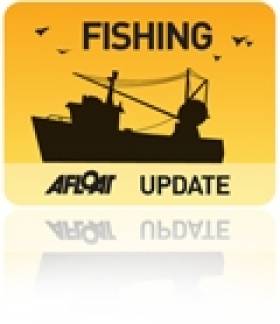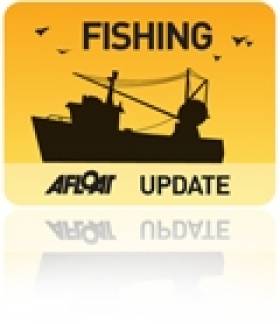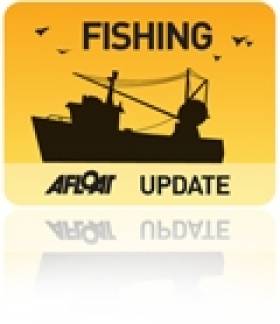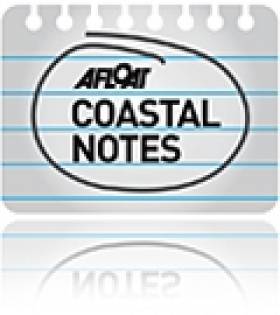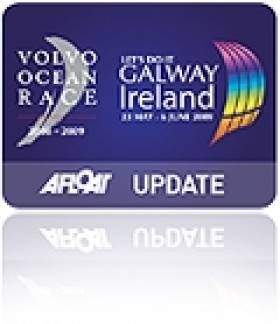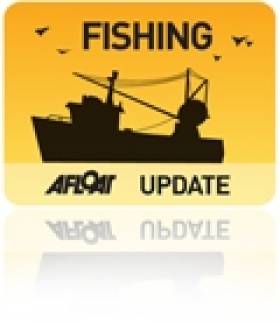Displaying items by tag: Galway
Cork Head of the River Stands Alone as Lagan Event Falls
#ROWING: Lagan Scullers’ Head of the River, scheduled for Saturday in Belfast, has been cancelled. “The forecast was bad and getting worse,” said race director Gordon Reid this afternoon. The weather system could have made the course dangerous. Cork Head, however, is set to go ahead at the Marina on Saturday, with an entry of 280 crews. The high water levels on the Corrib have led to the early cancellation of Galway Head, which was set for St Patrick’s weekend.
Galway Skipper Expo This Weekend Celebrates 10 Years
#SkipperExpo - Galway's Skipper Expo celebrates its 10th anniversary when it opens this weekend 7-8 March at the Galway Bay Hotel.
Supported by Bord Iascaigh Mhara (BIM) and Mullion, the international fisheries show will showcase the vast range of products and services available to the fishing industry.
And according to organisers Mara Media, the hallmark of the expo is its friendly atmosphere combined with a proven track record in being a great place to do business.
Visitors from fishing ports throughout Ireland are expected to be bolstered by strong contingents from Scotland and other parts of the UK, not to mention continental Europe.
Skipper Expo 2014 opens on Friday 7 March at 10am running till 5pm, continuing on Saturday 8 March from 10am to 4pm. Admission is free, and for more details visit the Mara Media website HERE.
#sailmaker – Veteran pro solo sailor Yannick Lemonnier has opened Quantum sail loft in Galway docks to service both the Southern and Northern Ireland sailing markets.
Lemonnier, a double handed Round Ireland record holder, says he will service and repair any type of sail; cruisers, racers, dinghies, windsurf, kitesurf and even windmill sails.
With an impressive floor area of nearly 450 sq.metres, the Galway harbour loft is capable of handling the largest sails such as for VOR70 or MOD70 racing yachts and operates collection points from Dublin and Cork.
The French sailmaker has an impressive sailing CV, having sailed in excess of 70,000 miles, mostly single handed or double-handed, and competed in five 'Solitaire du Figaro', 2 Transatlantic race double-handed "AG2R", won 2 French National Student match-racing, won French National Student cruiser/ racer title and has competed in many "Tour Voile", "Spi Ouest France", Cowes Week (TP52), Fasnet Races.
The international Quantum Sail Design Group was formed in 1996 by a group of independent and experienced sailmakers. The firm has grown to more than 60 sales and service outlets throughout the world with headquarters in Traverse City, Michigan, USA. Sails are built at three, state-of-the-art manufacturing centers strategically located around the globe.
More on the new Galway loft here
State Aid Rules Block Compensation For Lost Galway Fishing Boats
#Fishing - Galway fishermen will receive no State compensation for fishing vessels damaged or lost in the recent spate of storms, according to Galway Bay FM.
As Afloat.ie reported last month, Marine Minister Simon Coveney said he would do whatever was in his power to help fishermen whose livelihoods have been affected by the extraordinary severe weather since the start of the year.
But it emerged this week that no compensation would be coming their way due to State aid rules - though funding will be considered to help replace lost fishing equipment such as lobster pots via Bord Iascaigh Mhara.
Minister Pushing For Assistance For Storm-Affected Galway Fishermen
#Fishing - Marine Minister Simon Coveney has said he will do what he can to help fishermen in Galway whose livelihoods have been affected by the damage wrought in the recent storms, as Galway Bay FM reports.
The move follows a call by a local senator for Government assistance to inshore fishermen facing expensive repairs to vessels and docksides, not to mention many small shellfish farms devastated by the extreme waves and high tides.
In other regional news, the Connacht Angling Council says it will oppose the introduction of compulsory angling charges should they be introduced with the new Inland Fisheries Bill.
According to the Galway Advertiser, opponents of the bill view any proposal for a registration charge as a 'rod licence' in disguise.
"The ownership and right to use these waters for angling are jewels that we have inherited from our forefathers," said council chair Martin Kinneavy, "jewels our forefathers fought to keep and are not for sale at any cost."
Afloat.ie recently published an FAQ on proposed measures for the new bill.
Galway Puts Storm Damage Costs At Hundreds Of Thousands
#Storm - A special report on the extent of damage caused by the recent storms in Galway City has estimated the cost of repairs at more than three-quarters of a million euro, according to Galway Bay FM.
The figure includes estimated costs of repairing footpaths and public use facilities damaged by the extreme winds and flooding experienced citywide - and in particular the beaches and promenade at Salthill, which more the brunt of the Atlantic swells and high tides.
In addition, repairs to Leisureland in the seaside suburb are pegged at half a million euro alone.
Further down the West coast in the storm-ravaged Clare town of Lahinch, The Irish Times reports that a start-up surf school has had a horrendous start to the year, losing its van to the floodwaters that caused significant and expensive damage to the promenade.
Galway To Bid For Third Volvo Ocean Race Visit In 2020
#VOR - Among the future plans for Galway as part of the masterplan for the city's port submitted last week is the intention to bring back the Volvo Ocean Race for the third time, as the Irish Independent reports.
Galway harbour master Capt Brian Sheridan says 2020 would be the earliest that Galway could bid for a stopover place in the event that it previously hosted in 2009 and 2012, the latter reportedly generating some €60 million for the local economy and attracting a global audience of over 1 billion.
What's more, Galway Harbour Company chief Eamon Bradshaw has intimated that the idea of integrating the harbour with the city, which lies at the heart of the masterplan, only took off with the first visit of the round-the-world yacht race to the City of the Tribes.
As previously reported on Afloat.ie, the new harbour development scheme will see land reclined from Galway Bay to provide much needed berthing space for expansion, as well new projects like a proposed "mii Sydney Opera House" that would host VOR-related events should the next bid be successful.
Flooding Will Happen 'With Or Without' Galway Port Expansion
#Flooding - Flooding events in Galway of the likes experienced in the recent winter storms will occur more regularly "with or without" the expansion of the city's port, according to Galway's harbourmaster.
As The Irish Times reports, Capt Brian Sheridan said "worst case scenario" modelling has been carried out on the masterplan for the port's expansion, which was lodged with An Bórd Pleanála yesterday (10 January).
Proposals for the scheme, which would see 27 hectares of land reclaimed from Galway Bay, include a "mini Sydney Opera House".
But for now, many residents in Galway and other western coastal areas blighted by the recent extreme weather are concentrating on picking up the pieces.
On Achill Island, guesthouse and gallery owner John Bartlett said the tight-knit community was "pretty well whacked" by the tidal flooding and sea surges that wreaked havoc along the Mayo coast.
And further south in Kerry, fisherman Patrick O'Sullivan tells The Irish Times of the shocking night last week when the Atlantic literally crashed into his young family's home.
Fisherman Affected By Storms Need Govt Assistance Says Senator
#Fishing - A Galway senator has called for Government assistance for inshore fishermen devastated by the recent storms that have ravaged the west coast, damaging vessels, piers and slipways - and devastating many small coastal shellfish farms.
As Galway Bay FM reports, Senator Trevor O' Clochartaigh (Sinn Féin) has suggested Marine Minister Simon Coveney could bail out via an emergency fund fishermen whose livelihoods have been threatened.
Similar funding has been called for to help repair coastal roads in Galway rendered impassable by the exceptional winds and flooding since the New Year began.
In addition, Galway West TD Eamon O Cuiv says he will press the Government to make funds available for the Aran Islands and the Connemara region, both of which have been severely affected by the worst storms in recent memory.
The nation was this week left counting the cost of the extraordinary series of storms, in particular Lahinch in Co Clare, which suffered millions of euro worth of damage to its seaside promenade as massive swells encroached half a kilometre inland.
Six lighthouses also sustained structural damage in what were often hurricane-force winds, though all remained operational.
Funding Approved For Galway Water Mains Project
#GalwayBay - Galway Bay FM reports that Galway City Council has approved a €5 million project to upgrade the city's water mains.
The first phase of the Water Conservation Rehabilitation Works Programme will involve works on 15km of water mains across 17 meter areas in the city, which takes its water supply from the River Corrib that flows into Galway Bay.



























